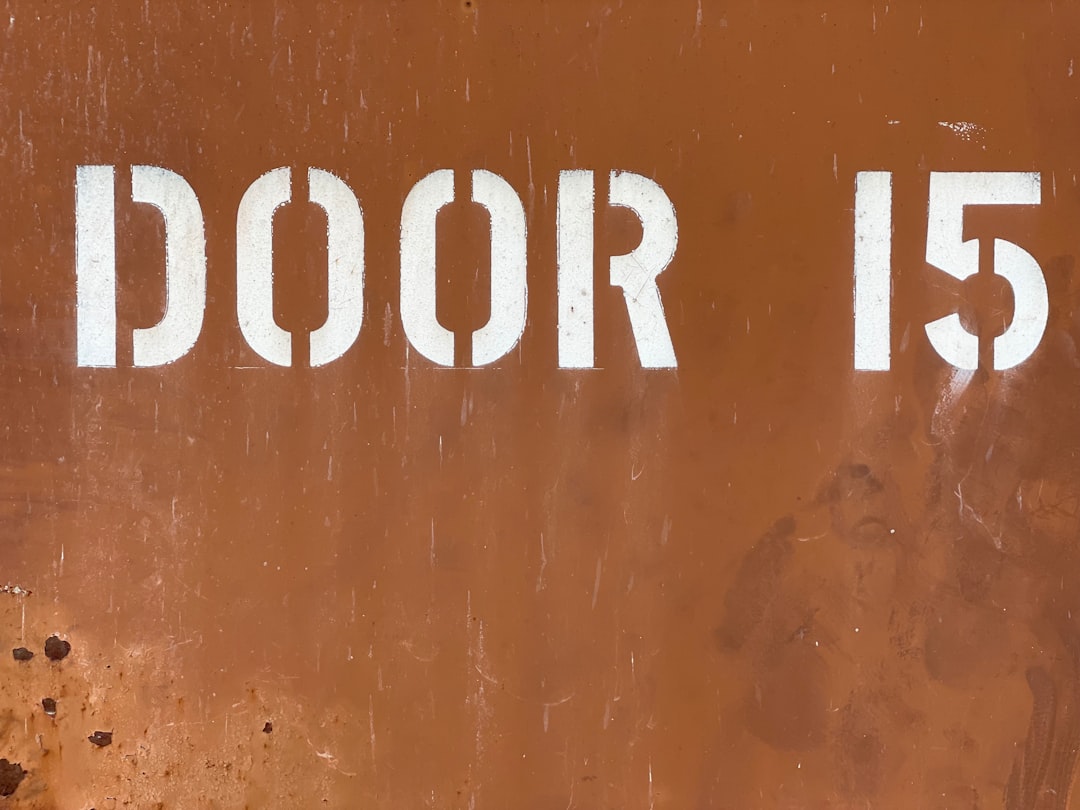

Engage prospects with a scan and streamline customer engagement with FREE QR code marketing tools by Sona – no strings attached!
Create a Free QR CodeFree consultation

No commitment

Engage prospects with a scan and streamline customer engagement with FREE QR code marketing tools by Sona – no strings attached!
Create a Free QR CodeFree consultation

No commitment
In the era of smart homes and connected services, door repair services are leveraging digital tools to address evolving customer expectations, such as home repair QR. Traditionally dependent on referrals and offline marketing, this industry faces the challenge of making seamless transitions from physical to digital for both property owners and facilities managers. Many providers still miss valuable prospects because opportunities go untracked, resulting in lost bookings and wasted field capacity.
Door repair service providers are tasked with reducing downtime, expediting emergency responses, and demonstrating service expertise, all while streamlining appointment booking and status tracking. Outdated processes like handwritten service requests and static contact signs not only slow operations but also obscure crucial demand signals needed for better resource allocation and repeat business. Without improved visibility, high-intent prospects researching services may go unpursued if they never submit a form or call.
QR codes in marketing offer a scalable, user-friendly method for providing instant access to support, service request forms, or maintenance documentation at the point of need. Integrating QR technology into door repair workflows addresses core client needs such as speed, transparency, and security while capturing valuable engagement data that pinpoints when and where interest is highest. These actionable insights help enable more responsive service and targeted marketing, supporting proactive business growth.

QR codes bridge the gap between analog service touchpoints and digital booking, helping door repair services deliver convenient, efficient solutions to both residential and commercial clients while addressing longstanding pain points around booking delays and missed follow-up opportunities. By placing scannable gateways at the exact moment of need, you turn interest into action and action into measurable outcomes.
This guide outlines how to design, deploy, and optimize QR-powered booking experiences that reduce friction for customers and boost utilization for your technicians. It also highlights how modern tools like Sona QR centralize management and analytics so your team can learn, iterate, and scale.
For example, replacing a static phone number with a QR code on a repair van lets passersby instantly book a quote. Linking print ads or door repair cost calculators to QR landing pages accelerates lead capture and speeds follow-up via posters. Many service providers now use platforms that automate campaign deployment, intent capture, and downstream data sync with CRMs and ad platforms, which reduces missed leads caused by disconnected workflows and manual handling. If you’re on HubSpot, see Sona’s guide to connecting HubSpot CRM.

Door repair services face unique challenges, including rapid response needs and the requirement to demonstrate value quickly. Many companies have limited visibility into potential customers, especially when engagement comes from anonymous offline interactions. Property managers may see a sign, snap a photo, and plan to call later, but without a digital bridge that moment can vanish. QR codes turn fleeting attention into immediate action while capturing data that informs your next move. Tactics like QR door hangers can convert local awareness into booked jobs.
By embedding QR codes into materials common in door repair such as appointment cards, invoices, door hangers, lobby notices, and equipment tags, providers can modernize access and collect measurable signals. The result is faster booking, fewer lost leads, and clearer attribution for marketing and operations teams.
For door repair providers who lose hot leads or emergency inquiries due to lack of follow-up, integrating QR touchpoints where prospects engage enables consistent lead capture, faster triage, and stronger relationships over time.

Door repair companies benefit most from a focused set of QR code formats that map to typical tasks in the field and at the office. Selecting the right format reduces friction for customers and removes manual steps for staff, resulting in higher conversion and better service quality.
The formats below cover the majority of door repair needs, from immediate incident reporting to long-term account management. Use dynamic QR codes whenever you want editability and analytics, and reserve static codes for unchanging, low-stakes destinations.
Dynamic QR codes allow providers to tailor destinations as promotions, availability, or emergency contact trees change. Centralized solutions like Sona QR let you manage formats in one place, swap links without reprinting, and keep assets consistent across teams.

QR codes excel wherever your offline audience faces a service need. Door repair often starts with a physical issue, which means your brand is encountered on-site, in transit, or through printed materials. Turning these touchpoints into digital gateways increases conversion and clarifies attribution; see Sona’s offline attribution.
Start by auditing where prospects see your brand, then add QR codes with strong, benefit-driven calls to action. Align each placement with a relevant destination and an outcome you can measure, such as a scheduled appointment, a quote request, or a maintenance inquiry.
Target frequent touchpoints and integrate scan data with your CRM or lead-routing workflows. This reduces churn from missed calls, ensures timely follow-up, and creates a clearer picture of where your best leads originate.

Door repair spans emergency response, scheduled maintenance, and customer care. The most effective QR applications map directly to these journeys and emphasize speed, documentation, and follow-through. When set up correctly, each scan becomes a step in a consistent, data-driven experience.
Integrate these use cases with your scheduling and communications stack so the right team member is alerted immediately. Over time, analyze which use cases produce the highest conversion and lifetime value, then shift budget and placement accordingly.
These use cases match common touchpoints across residential, commercial, and property management segments. They replace slow analog processes, reduce phone tag, and produce clean data for marketing attribution and operations planning.
Every scan event is a high-signal lead, especially for urgent or scheduled repairs. However, many companies miss these opportunities because scan interactions from physical placements are not connected to digital retargeting databases. Treat each QR code as both a conversion pathway and a segmentation tool to build richer audiences over time.
By tagging scans by intent and context, you can create highly targeted follow-up that respects urgency and relevance. For example, a weekend emergency scan deserves immediate SMS triage and priority scheduling, while a weekday scan of a maintenance brochure may be better suited for educational nurture. For execution, see Sona’s retargeting playbook.
Segmenting audiences by residential versus commercial, emergency versus routine, and new versus returning customers helps door repair providers deliver the right follow-up, reduce response lag, and increase conversion across channels. With Sona QR, each code becomes a smart entry point that fuels your funnel with behavioral data rather than guesswork.
QR codes unify digital and offline marketing for door repair services. They connect the surfaces your customers see most often with the actions they need to take, while enriching your analytics with context you can use to improve performance. This connection is valuable in a field where many first interactions happen away from a computer.
Integrate QR codes across your promotional and operational materials so that every touchpoint moves prospects toward a scheduled job, a signed agreement, or a positive review. With a centralized platform like Sona QR, you can manage creative consistency, monitor results, and sync scan data to your CRM and ad platforms, then measure impact with Sona’s measure pipeline.
QR codes serve as the offline onramp to your digital marketing engine. They also unlock data collection across channels that were once difficult to measure. With Sona QR, you can orchestrate a connected journey that reduces friction, improves attribution, and accelerates booking.
A strong execution process ensures your first QR initiatives deliver measurable value and set a foundation for scale. Use the steps below as a blueprint for your team, and adapt the examples to your market and service model. Each step includes guidance tailored to door repair, from emergency flow design to post-visit feedback loops.
Consistency is vital. Document your rules for code creation, placement, and tagging. This prevents fragmentation as you add more assets and makes measurement reliable across neighborhoods, vehicles, and campaigns.
Start with a high-impact use case that addresses an obvious pain point for your customers and your team. For example, enable emergency door repair requests with QR codes in apartment hallways and elevator lobbies. Tenants scan, submit a short form, and upload a photo so dispatch can estimate materials and arrival. For additional field tactics, see contractor marketing.
Define your campaign goal and success criteria. If the goal is faster emergency response, track time from scan to scheduled dispatch and from dispatch to on-site arrival. If the goal is more quotes, track scan-to-quote conversion and quote-to-job conversion. Align your QR code’s purpose with a clear business outcome and resource plan.
Choose static or dynamic based on your need for flexibility and tracking. Static codes are appropriate for unchanging destinations like a PDF maintenance checklist, while dynamic codes are ideal for editable links and robust analytics. Door repair providers typically default to dynamic for most customer-facing assets since availability, offers, and contact routing evolve.
Decide on the format that best matches the user action. Web links typically drive to booking pages, SMS can pre-fill an emergency text, and vCards help business clients save your direct line. Platforms like Sona QR let you manage multiple formats under one campaign, so you can test and refine.
Brand the QR code with your logo and colors, and frame it with a benefit-driven CTA such as “Scan for 24/7 Door Repair” or “Scan to Book a Same-Day Fix.” Ensure sufficient contrast, white space, and size for the viewing distance. Test scans on multiple devices and from typical angles and lighting conditions found in hallways, parking garages, and storefronts.
Create landing experiences that match the promise near the code. If the CTA says 24/7 repair, the page should present a short, mobile-first form with address lookup, problem type, and photo upload. Reduce taps and auto-fill wherever possible. Before launch, run a quick field test with technicians and a building manager to confirm reliability and clarity.
Position codes where your audience already looks. High-traffic doors, property mailrooms, service vans, and leave-behind cards are perfect. Match placement to behavior and scanning context. For example, emergency CTAs belong on signage and vehicles, while maintenance plan enrollment works well on invoices and post-repair reports.
Ensure that each placement uses a unique QR ID and UTM-tagged destination. This preserves measurement by asset and location. Avoid disconnected or inconsistent campaigns by centralizing creative, links, and tagging rules in a platform like Sona QR. Provide a simple guide for staff and partner buildings so deployments remain on brand and on message.
Analyze scan reports weekly to identify high-performing assets and hotspots by time of day. Monitor completion rates from scan to form submit and scan to scheduled appointment. If drop-off is high, simplify fields, clarify expectations, or offer callback options. If emergency scans spike in certain complexes, adjust staffing or inventory to match demand.
Top solutions integrate these insights with your CRM so account managers and dispatch can respond faster. A/B test landing page headlines, CTAs, and questions. Iterate on creative and placement, and retire underperforming assets. Over time, optimize your mix to maximize response speed, conversion, and technician utilization. For a broader framework, see Sona’s measure pipeline.
Data-driven insight is essential for door repair marketing, since many providers struggle to connect offline engagement with actual revenue. QR code analytics show where interest originates, how it flows through your funnel, and which actions generate booked jobs and maintenance contracts. Without that clarity, it is hard to allocate budget or schedule crews accurately. For methodology, explore Sona’s offline attribution.
Advanced tracking platforms capture each scan’s context and automate next steps, so your team sees signal rather than noise. This improves both marketing ROI and operational efficiency because you make decisions with near real-time visibility.
With Sona QR and Sona, you can go beyond scan counts. Track engagement by channel, respond in real time, sync with your CRM, and attribute revenue to offline-to-online journeys. Sona’s Buyer Journeys can unify fragmented touchpoints, helping door repair teams link scans with website visits, email engagement, and CRM activity so you see the path from first scan to booked job.
Scaling what works requires discipline and creativity. The tips below focus on accurate attribution, timely follow-up, and field-ready deployments that make scanning easy and beneficial. Choose those that match your mix of residential and commercial work.
Start with a small set of placements, measure rigorously, and then layer in new use cases and assets. Over time, create a playbook that standardizes workflows for technicians, office staff, and partner properties so programs remain consistent as you grow.
For creative deployment, print QR codes on warranty cards that open a “priority repair” form, and add QR-enabled quote forms to technician uniforms to capture foot traffic leads at hardware stores or community events. These touches keep your brand scannable in the exact moments people need help.
QR codes are transforming how door repair services connect every physical asset to an actionable, trackable customer journey. When you place instant access points at the scene of need, you cut response times and boost customer confidence. When you layer analytics and automation, you convert more interest into scheduled work and contracts.
The advantages are immediate and compounding. You create smoother and more responsive customer experiences for emergencies, scheduled maintenance, and routine needs. You improve conversion rates and operational efficiency by digitizing manual workflows and surfacing engagement signals that guide staffing and marketing. You collect rich intent data, so every scan becomes a signal for smarter targeting and better spend.
Modern platforms make this easy to implement and scale. With Sona QR, providers can generate and manage codes, monitor performance, and sync engagement to CRMs and ad platforms. With Sona.com, teams can connect scans to revenue and unify fragmented touchpoints across the buying journey. By adopting tools to manage, attribute, and optimize every QR interaction, door repair providers stay agile in a changing market, delivering both client value and business growth. Start creating QR codes for free.
Harness QR codes to ensure every walk-by, drive-by, and service visit becomes a data-driven opportunity. The providers that surface, track, and act on these engagement signals will capture high-value demand and avoid the risk of lost or untracked prospects.
QR codes have revolutionized door repair services by transforming how access is managed and customer interactions are streamlined. They enable seamless, secure entry solutions while enhancing customer convenience and operational efficiency. Imagine instantly granting technicians access to job sites with a simple scan, reducing delays and improving service satisfaction—all while capturing valuable data on service usage and customer engagement.
With Sona QR, you can effortlessly create dynamic, trackable QR codes tailored for door repair scenarios, update access permissions in real time without reprinting, and link every scan to actionable insights that optimize your workflows and boost client trust. No more cumbersome keys or manual logs—just smarter, data-driven access management that drives growth.
Start for free with Sona QR today and unlock the full potential of QR codes to elevate your door repair services and customer experience.
Repairing a damaged door typically involves identifying the issue, such as misalignment or broken components, and then scheduling a professional door repair service that can address the problem efficiently.
Signs include door misalignment, difficulty opening or closing, damaged locks or handles, visible cracks or dents, and safety concerns like compromised security or malfunctioning components.
Door repair costs vary depending on the type and extent of damage, but using QR codes linked to cost calculators or quotes can provide instant estimates from local service providers.
You can find reliable door repair services near you by scanning QR codes on local flyers, service vans, storefronts, or signage that link directly to booking pages or emergency request forms.
QR codes provide instant access to booking, emergency repair requests, cost estimates, and customer feedback while capturing engagement data that improves response times, marketing, and resource allocation.
Appointments can be scheduled by scanning QR codes on service materials, vehicles, or signage that direct you to online booking forms with real-time calendar availability.
Common repairs include emergency lockouts, misaligned doors, broken hinges or handles, routine maintenance, and scheduled commercial service agreements.
Prevent future damage by scheduling regular maintenance through QR code-enabled service plans, addressing minor issues promptly, and ensuring professional installation and repairs.
Evaluate the severity and frequency of issues; minor problems and occasional malfunctions usually require repair, while extensive damage or repeated failures might warrant replacement, which a professional can assess.
Safety measures include using proper tools, following manufacturer guidelines, securing the work area, and ensuring technicians have access to necessary systems like Wi-Fi for smart locks to avoid delays.
Use Sona QR's trackable codes to improve customer acquisition and engagement today.
Create Your FREE Trackable QR Code in SecondsJoin results-focused teams combining Sona Platform automation with advanced Google Ads strategies to scale lead generation

Connect your existing CRM

Free Account Enrichment

No setup fees
No commitment required

Free consultation

Get a custom Google Ads roadmap for your business






Launch campaigns that generate qualified leads in 30 days or less.
